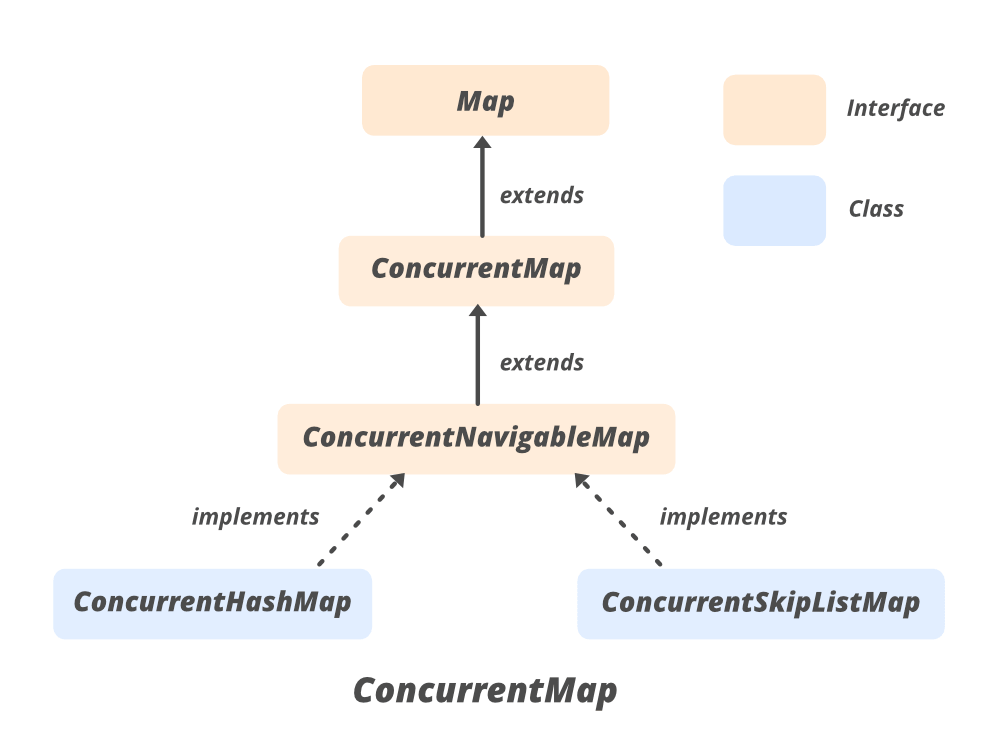ConcurrentMap Guide
Navigating ConcurrentMap: A Comprehensive Guide to Concurrent Data Structures in Java
Introduction
In the world of concurrent programming, managing shared resources safely and efficiently is a critical challenge. A **ConcurrentMap **is a specialized data structure designed to address this challenge by providing thread-safe operations on key-value mappings. Unlike regular maps, which can lead to data inconsistencies and race conditions when accessed by multiple threads simultaneously, a **ConcurrentMap **ensures that such issues are mitigated, enabling concurrent access and modification.
Historical Overview of ConcurrentHashMap Construction
Before Java 8, **ConcurrentMap **used a segmentation strategy to manage concurrency. The number of segments was determined based on the number of threads accessing the map. This approach aimed to ensure that typically only one thread would update a segment at any given time, thereby reducing contention and improving performance.
To control the number of segments, the constructors for **ConcurrentMap **included an additional **concurrencyLevel **argument. This parameter allowed developers to specify the estimated number of concurrent threads that would access the map, fine-tuning the performance based on expected usage patterns. Here is an example constructor signature:
1
public ConcurrentHashMap(int initialCapacity, float loadFactor, int concurrencyLevel)
The other parameters, initialCapacity **and **loadFactor, functioned similarly to their counterparts in HashMap, determining the initial size of the map and the **threshold **for resizing, respectively.
However, starting with Java 8, the internal implementation of ConcurrentHashMap **was overhauled to improve performance and scalability. The **segmentation strategy was replaced with a more efficient design that no longer required manual segmentation. As a result, the **concurrencyLevel **parameter became obsolete. Although the constructors that include this parameter are still present for backward compatibility, they no longer influence the number of segments. Instead, these parameters now only affect the initial size of the map.
Methods
The **ConcurrentMap **interface extends the Map interface and introduces methods that facilitate thread-safe operations. Below are some of the key methods:
putIfAbsent(K key, V value): Associates the specified value with the specified key if the key is not already associated with a value.
remove(Object key, Object value): Removes the entry for a key only if it is currently mapped to a given value.
replace(K key, V oldValue, V newValue): Replaces the entry for a key only if currently mapped to a specific value.
replace(K key, V value): Replaces the entry for a key only if currently mapped to some value.
computeIfAbsent(K key, Function<? super K, ? extends V> mappingFunction): Computes a value for the given key using the provided mapping function if the key is not already associated with a value.
computeIfPresent(K key, BiFunction<? super K, ? super V, ? extends V> remappingFunction): Computes a new mapping for the specified key and its current mapped value if present.
merge(K key, V value, BiFunction<? super V, ? super V, ? extends V> remappingFunction): Merges the specified value with the existing value for the specified key.
These methods ensure that the operations are atomic, meaning that the entire operation is performed as a single, indivisible action, preventing other threads from seeing intermediate states.
Internals
Internally, ConcurrentMap **implementations use various mechanisms to ensure thread safety and efficiency. The most common implementation is **ConcurrentHashMap, which divides the map into segments, each of which can be locked independently. This reduces contention by allowing multiple threads to operate on different segments simultaneously. Key techniques used in the implementation include:
Lock Striping: Breaking the map into segments, each guarded by its own lock.
Non-blocking Algorithms: Using techniques like compare-and-swap (CAS) to update values without locking.
Lazy Initialization: Delaying the creation of internal structures until they are needed to reduce the initial overhead.
These techniques ensure that **ConcurrentMap **implementations can handle high levels of concurrency efficiently.
Usage
Using a ConcurrentMap **is straightforward. Here’s an example using **ConcurrentHashMap, the most common implementation of ConcurrentMap:
1
2
3
4
5
6
7
8
9
10
11
12
13
14
15
16
17
18
19
20
21
22
23
24
25
26
27
28
29
30
import java.util.concurrent.ConcurrentHashMap;
import java.util.concurrent.ConcurrentMap;
public class ConcurrentMapExample {
public static void main(String[] args) {
ConcurrentMap<String, Integer> map = new ConcurrentHashMap<>();
// Put a value if absent
map.putIfAbsent("key1", 1);
// Remove a value if it matches
map.remove("key1", 2); // Will not remove because the value does not match
map.remove("key1", 1); // Will remove because the value matches
// Replace a value if it matches
map.put("key2", 2);
map.replace("key2", 2, 3); // Will replace because the old value matches
// Compute a value if absent
map.computeIfAbsent("key3", k -> 42);
// Compute a value if present
map.computeIfPresent("key3", (k, v) -> v + 1);
// Merge values
map.merge("key3", 10, Integer::sum);
System.out.println(map);
}
}
In this example, various ConcurrentMapmethods are used to manipulate the map safely across potentially multiple threads.
Use Cases
Web Servers: It will be helpful for, managing session data where each user session is a key-value pair.
Caching: Implementing thread-safe caches that multiple threads can access and modify without synchronization overhead.
Metrics Collection: Collecting and updating real-time metrics in multi-threaded applications.
Gaming Servers: Keeping track of game state and player statistics in multiplayer games.
Conclusion
**ConcurrentMap **is an essential tool in concurrent programming, offering thread-safe operations for managing key-value pairs. By understanding and utilizing its methods, developers can ensure data consistency and performance in multi-threaded environments. The internal mechanisms of **ConcurrentMap **implementations like **ConcurrentMap **provide efficient solutions to common concurrency challenges, making them suitable for a wide range of applications where thread safety is paramount.
Links:
https://docs.oracle.com/javase/8/docs/api/java/util/concurrent/ConcurrentHashMap.html
](https://cdn-images-1.medium.com/max/2000/0*8RArEzlUNBWkFHD5.png)
](https://cdn-images-1.medium.com/max/2000/0*22FXqhzIUeDKPa0h)